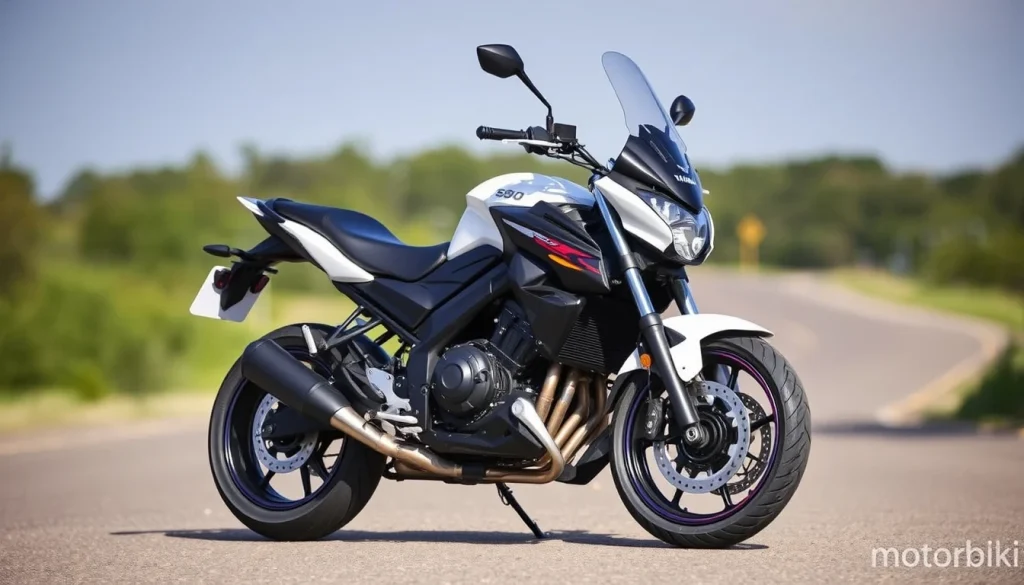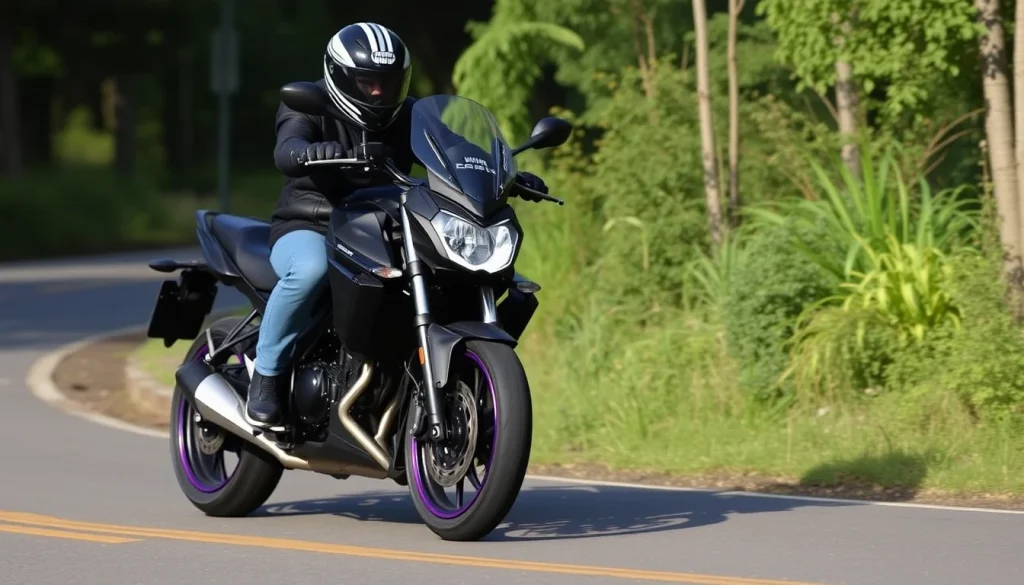7 Common Yamaha Fazer 600 Problems with Symptoms, Causes, and Best Fixes Tips
The Yamaha Fazer 600 is a versatile middleweight motorcycle, well-known for its practicality, comfort, and dependable performance. However, like every bike, it has a few recurring problems that owners often report. In this detailed guide, we’ll explore Yamaha Fazer 600 Problems, along with symptoms, causes, and effective solutions that can help riders maintain their Fazer 600 for years to come.

Discover the Yamaha Fazer 600’s common problems, specs, pros & cons, rider feedback, and reliability insights in this complete 2025 guide.
1. Carburetor Blockage and Fuel Delivery Issues
Customers often complain to mechanics that the problem keeps recurring, making the bike less enjoyable and more expensive to maintain. In some cases, it even leads to long-term damage that affects the motorcycle’s overall reliability.
Symptoms
- The engine misfires or cuts out while accelerating
- Difficulty starting after the bike sits for a few days
- Rough idle with unstable RPMs
- Noticeable fuel smell when parked
- Loss of throttle response at mid-range
Causes
- Old or contaminated fuel clogging jets
- Poor maintenance and irregular cleaning
- Damaged float valves inside carburetors
- Rust or dirt entering from the fuel tank
- Low-quality aftermarket fuel filters
Solutions
- Clean and balance carburetors using carb cleaner
- Replace the float valves or the damaged jet
- Drain old fuel and refill with fresh high-octane petrol
- Install an inline fuel filter for extra protection
- Schedule carb cleaning every 10,000 km
2. Charging System and Battery Drain
“Many riders feel frustrated as this issue keeps coming back, reducing confidence on the road and increasing maintenance bills.
Symptoms
- The battery is losing charge quickly after rides
- Dim or flickering headlights
- Electrical accessories are ailing intermittently
- Bike struggles to start in cold weather
- Dashboard lights flicker under the throttle
Causes
- Faulty regulator/rectifier
- Weak or old battery past service life
- Loose ground connections
- Stator coil failure
- Overuse of aftermarket electrical accessories
Solutions
- Replace the regulator/rectifier with an EM or quality aftermarket part
- Test and replace the weak battery
- Clean and tighten electrical connectors
- Inspect and replace the stator if necessary
- Avoid overloading with high-watt accessories
3. Clutch Slipping and Premature Wear
Riders say this issue quickly turns from a small nuisance into a real safety concern. Even after fixes, it often returns, hurting both performance and the rider’s pocket.
Symptoms
- Engine revs increase, but speed doesn’t match
- Burning smell after aggressive riding
- Difficulty shifting gears smoothly
- The clutch lever feels unusually soft
- Reduced acceleration under load
Causes
- Worn clutch plates
- Incorrect clutch cable adjustment
- Using the wrong grade of engine oil
- Riding habit of half-clutch in traffic
- Weak clutch springs
Solutions
- Replace worn clutch plates and springs
- Adjust the clutch cable free play
- Always use the recommended 10W-40 motorcycle oil
- Avoid unnecessary clutch slipping during rides
- Inspect and replace the clutch basket if damaged
4. Front Suspension Wear and Fork Seal Leakage
What seems like a minor fault at first often grows into a serious concern, affecting safety, performance, and overall reliability.
Symptoms
- Oil is leaking near the front fork seals
- Excessive dive under braking
- Unstable handling on uneven roads
- Knocking sound from the front end
- Reduced comfort during long rides
Causes
- Worn fork seals due to dirt or age
- Lack of periodic fork oil changes
- Damaged fork tubes from rough roads
- Excessive load or aggressive riding
- Poor suspension maintenance
Solutions
- Replace leaking fork seals
- Change fork oil every 20,000 km
- Inspect and polish fork tubes
- Install fork gaiters for protection
- Consider aftermarket suspension upgrades
5. Overheating in City Traffic
Riders often describe this problem as a serious headache that takes away the joy of riding the Fazer. What begins as a small issue quickly turns into a safety concern if left unattended. Many owners complain to mechanics that, despite repairs, the trouble keeps returning—draining both time and money. Over time, the bike’s performance and reliability take a noticeable hit, leaving riders frustrated and worried about long-term costs.
Symptoms
- Engine temperature is rising rapidly in traffic
- Radiator fan running constantly
- Coolant boiling or leaking
- Loss of performance during heat build-up
- Warning light flashing on dashboard
Causes
- Low coolant level or leaks
- Clogged radiator fins
- Faulty thermostat or radiator fan
- Using the wrong coolant mix
- Poor air circulation in stop-and-go traffic
Solutions
- Top up or flush the coolant system
- Clean radiator fins regularly
- Replace the faulty fan or thermostat
- Always use the recommended coolant mixture
- Avoid prolonged idling in heavy traffic
6. Braking System Fade and Disc Wear
“Owners complain that this problem spoils the riding experience and, if ignored, can become both dangerous and costly.”
Symptoms
- Spongy brake lever feel
- Increased braking distance
- Vibrations during braking
- Brake fluid leakage
- Brake pads were wearing too quickly
Causes
- Air trapped in brake lines
- Worn brake pads or discs
- Low brake fluid levels
- Poor-quality aftermarket parts
- Lack of routine brake servicing
Solutions
- Bleed brake lines to remove air
- Replace pads and discs when worn
- Use DOT-4 recommended brake fluid
- Avoid cheap aftermarket brake pads
- Inspect calipers for proper functioning
7. Exhaust and Rust Issues
Many riders admit that this issue is one of the most frustrating parts of owning the Fazer. It not only reduces confidence while riding but can also become dangerous if ignored for too long. Customers often complain to mechanics that the problem keeps coming back, making the bike less enjoyable and more costly to maintain. In some cases, it even leads to long-term damage that affects the motorcycle’s overall reliability.”
Symptoms
- Visible rust on exhaust pipes
- Loud rattling exhaust noise
- Exhaust gases are leaking before the silencer
- Reduced fuel efficiency
- Strong fuel smell from the exhaust
Causes
- Riding in wet weather without protection
- Poor quality aftermarket exhausts
- Lack of anti-rust coating
- Loose exhaust clamps or gaskets
- Natural wear over the ears of use
Solutions
- Apply anti-rust treatment regularly
- Replace rusted exhaust sections
- Use stainless steel or coated aftermarket exhausts
- Tighten and replace exhaust clamps/gaskets
- Store the bike in a dry, covered area

Yamaha Fazer 600 Specifications
| Category | Specification |
| Model Name | Yamaha Fazer 600 (FZS600 Fazer) |
| Production Years | 1998 – 2003 |
| Engine Type | 599cc, liquid-cooled, inline 4-cylinder, DOHC, 16-valve |
| Bore x Stroke | 62.0 mm × 49.6 mm |
| Compression Ratio | 12.0 : 1 |
| Maximum Power | ~95 hp (71 kW) @ 11,500 rpm |
| Maximum Torque | 61 Nm @ 9,500 rpm |
| Fuel System | 4x Mikuni BDSR 32 carburetors |
| Ignition | Transistor Controlled Ignition (TCI) |
| Transmission | 6-speed constant mesh |
| Final Drive | O-ring chain |
| Frame Type | Tubular steel diamond-type frame |
| Front Suspension | Telescopic fork, 43 mm |
| Rear Suspension | Monoshock, preload adjustable |
| Front Brakes | Dual 298 mm discs, 4-piston calipers |
| Rear Brakes | Single 245 mm disc |
| Front Tyre | 110/70 ZR17 |
| Rear Tyre | 160/60 ZR17 |
| Wheelbase | 1,440 mm (56.7 in) |
| Overall Length | 2,085 mm (82.1 in) |
| Overall Width | 735 mm (28.9 in) |
| Overall Height | 1,205 mm (47.4 in) |
| Seat Height | 790 mm (31.1 in) |
| Ground Clearance | 130 mm (5.1 in) |
| Dry Weight | ~189 kg (416 lbs) |
| Fuel Tank Capacity | 20 liters (5.3 US gal) |
| Top Speed | ~135 mph (217 km/h) |
| Fuel Consumption | ~40–45 mpg (UK) / 35–40 mpg (US) |
| Battery | 12V, maintenance-free |
| Lighting | Halogen headlamp (dual on later versions) |
FAQs about Yamaha Fazer 600
1. Is the Yamaha Fazer 600 a reliable motorcycle?
Yes, the Fazer 600 is known for its strong reliability when maintained properly. Many owners report crossing 50,000+ miles without major issues.
2. What is the top speed of the Yamaha Fazer 600?
The Fazer 600 can reach a top speed of around 135 mph (217 km/h), making it quick enough for highway and touring use.
3. What is the fuel economy of the Yamaha Fazer 600?
On average, the bike returns 35–40 mpg (US) or 40–45 mpg (UK), depending on riding habits and conditions.
4. Is the Fazer 600 good for beginners?
It’s not considered a true beginner bike due to its 600cc inline-four engine, but riders with some experience find it manageable thanks to its forgiving power delivery.
5. Does the Yamaha Fazer 600 have carburetors or fuel injection?
The Fazer 600 uses carburetors (Mikuni BDSR 32), which require periodic cleaning and tuning for optimal performance.
6. How comfortable is the Yamaha Fazer 600 for touring?
The upright seating position, windscreen, and wide seat make it comfortable for medium and long-distance rides. Some riders upgrade the seat for added comfort.
7. What are the common problems with the Yamaha Fazer 600?
Frequent issues include carburetor blockage, charging system faults, clutch wear, suspension leaks, and rust on exhaust parts.
8. What type of oil does the Yamaha Fazer 600 use?
Yamaha recommends 10W-40 motorcycle oil, either semi-synthetic or fully synthetic, depending on riding style and climate.
9. How often should the Yamaha Fazer 600 be serviced?
Routine servicing is advised every 4,000–6,000 miles, with major inspections and valve checks at 12,000 miles.
10. Does the Yamaha Fazer 600 have ABS?
No, the original Fazer 600 models (1998–2003) did not come with ABS.
11. How heavy is the Yamaha Fazer 600?
The bike weighs around 189 kg (416 lbs dry), which makes it manageable for most riders.
12. Is the Yamaha Fazer 600 good for commuting?
Yes, it’s well-suited for commuting, thanks to its upright ergonomics, good fuel range, and responsive handling.
13. Can the Yamaha Fazer 600 be used for track days?
While not designed as a pure sportbike, many riders enjoy using it for occasional track days because of its capable chassis and strong brakes.
14. What is the fuel tank capacity of the Fazer 600?
The fuel tank holds 20 liters (5.3 US gallons), giving it an impressive range of around 180–200 miles per tank.
15. What bikes compete with the Yamaha Fazer 600?
Competitors include the Suzuki Bandit 600, Honda Hornet 600, and Kawasaki ZR-7, all popular mid-size all-rounders of the same era.

Yamaha Fazer 600 – User Reviews & Rider Feedback
Overall Rider Impression
The Yamaha Fazer 600 has built a reputation as one of the most versatile and rider-friendly motorcycles in its class. Owners often describe it as a bike that blends the fun of a sport machine with the comfort of a commuter, making it a true all-rounder. Riders appreciate that it delivers reliable performance without being intimidating, which is why it has remained a favorite in the mid-sized segment for years.
Positive Feedback from Riders
- Engine Performance – Many riders love the smooth power delivery of the 600cc inline-four. It pulls strongly at high revs but remains forgiving enough for everyday riding.
- Comfort & Ergonomics – The upright riding position, decent wind protection, and wide handlebars make it suitable for both daily commuting and weekend touring.
- Practicality – Owners highlight its 20-liter fuel tank and good range as major advantages for longer rides.
- Reliability – With routine servicing, the Fazer 600 is seen as a machine that can last for decades without serious breakdowns.
- Value for Money – Used models remain affordable, making it an attractive choice for riders who want a dependable middleweight without breaking the bank.
Critical Feedback from Riders
- Carburetor Maintenance – Some owners find the carburetors require frequent cleaning and balancing, especially if the bike is left unused for long periods.
- Suspension Limitations – The stock suspension feels soft under aggressive riding, leading some riders to upgrade to aftermarket shocks or fork internals.
- Rust Issues – Exhaust pipes and certain frame areas are prone to rust if not properly maintained, particularly in wetter climates.
- Outdated Features – Compared to modern midweight bikes, it lacks advanced electronics such as ABS or traction control, which some riders would prefer.
Final Rider Verdict
Overall, most Yamaha Fazer 600 riders agree it’s a well-balanced, dependable motorcycle that delivers excellent everyday usability without sacrificing fun. While it may lack the latest technology, its combination of reliability, affordability, and versatile performance makes it a highly respected model among enthusiasts. Many owners say that if maintained well, the Fazer 600 is a bike that can serve faithfully for years, whether used for commuting, weekend trips, or even occasional spirited rides.
Yamaha Fazer 600 Pros & Cons Summary
| Pros | Cons |
| Smooth and reliable 600cc inline-four engine | Carburetors need regular cleaning and tuning |
| Comfortable upright riding position for city and touring | Stock suspension feels soft under heavy or aggressive riding |
| Excellent fuel tank capacity (20L) with long riding range | Prone to rust on exhaust pipes and certain frame parts |
| Great value for money in the used motorcycle market | Lacks modern electronics such as ABS |
Conclusion
The Yamaha Fazer 600 remains one of the most versatile and well-balanced motorcycles in the mid-size category. It combines the practicality of a commuter with the spirit of a sport bike, offering riders a machine that is both enjoyable and dependable. While it may not feature the latest technology found in newer models, its smooth engine, comfortable ergonomics, and long-distance capability make it a trusted companion for everyday use and weekend adventures.
Riders often appreciate its reliability and affordability, especially in the used market, where the Yamaha Fazer 600 problems continue to deliver excellent value for money. Of course, it comes with a few drawbacks, such as the need for carburetor upkeep and some suspension limitations, but these are relatively minor compared to its overall strengths.







